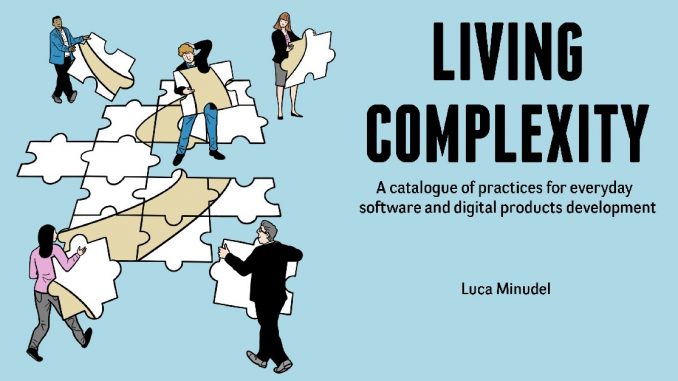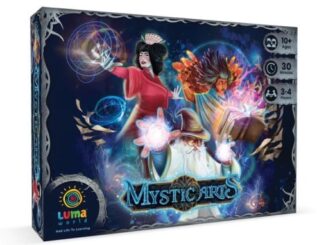
iving Complexity is described by its author, Luca Minudel, as a catalogue of practices for use within teams, with an eye also at the broader organisation. The readers who will probably find most value here will have an interest in Agile, but there is plenty here for all. Anyone who found interest in Ludogogy’s Systems Thinking issue will find in these pages plenty of models and frameworks to expand and inform their own knowledge and practice
Complexity in Creating Teams
The book is divided into three parts, logically taking us through the process of first, creating teams who will be equipped to deal with complexity, then identifying, assessing and adapting to complexity, and finally the practice of co-creation as a strategy to address complexity in a project, delivery initiative and in the whole organisation.
Although this book, as I mentioned, is aimed at software development teams, it has a number of applications for the reader of Ludogogy – learning professionals, games-based or otherwise, and designers of games or other playful experiences.
First, as a topic area. Learning Professionals working with organisations or with topics which involve complexity; climate change, racism and other systemic wicked problems will find models in here that are applicable way beyond the Agile team. For example, the section on Estimating Complexity by Liz Keogh would be an excellent addition to any learning session inviting learners to reflect carefully on the complexity of some aspect of organisational life – a change initiative or a project plan, for example.
Models and Practice in Complexity
Second, the book presents models and practices for working in design and development teams outside the software development arena, for example, learning and tabletop games design. Section 1 of the book is applicable to almost any team that is expecting to deal with some form of complexity – which describes most teams. The practices in this part of the catalogue address approaches to get the best out of the tendency of teams to self-organise (if not hindered from doing so). For example, Joseph Pelrine’s ‘Basic Model’ describes how the four prerequisites of a self-organising human system – which encompasses the team, its surrounding environment and those form outside who nevertheless have to interact with the team.
These prerequisites are: Critical Mass – the team must of a certain minimum size before emergent behaviour occurs; Diversity and Dissent – a diverse team avoids the evils of Groupthink and blindspots, an Environment large enough to work comfortably but small enough that people will necessarily interact; and Letting People Do It – Management get out of the way and let the team get on with it.

Complexity Control Knobs
Thirdly, for those of us actively involved in games design, this book provides excellent source material for game mechanisms and aesthetics. In the first part of the book, many of the practices are presented with accompanying ‘Control knobs’. These were part of what Pelrine originally offered as the ‘control knob’ analogy provides a way to think about deliberate design of the practices. For example, in the model above, the knobs which can be turned to find the optimum settings for a team are Team Size, Team Boundaries – who is in and who is out, and Roles. Minudel expands the use of the ‘knobs’ to the other, non-Pelrine, models in part one.
These even look like the kinds of controls one might get in a video game, and suggest, at least to me the way in which these models and practices could be implemented in scenario-based simulations and games which would allow players to test the efficacy of different approaches in a business or team setting.
Early in the book, you find a suggestion on how to approach decisions in a self-organising system, which has relevance to what we do when we design games, because what is a group of people playing a game if not a self-organising system? At the beginning of Part 3 there is a description of co-creation – also an important dynamic in collaborative games.
A Simple Format for Presenting Complexity
There is a standard format to the way that each of the practices is presented in the book. There is an overview which outlines in brief what the model or practice does. Then its Purpose is described, followed by an explanation of its Relation to Complexity (Theory). A fuller description of the practice/model follows, including diagrams and ‘control knobs’ (if applicable). Finally there is a section entitled ‘Practical Tips and Stories’ which includes ‘What now’ , ‘When’, How to’ and ‘What next’ tips, which give practical examples of the model in use, and stories which illustrate some or all of these in more detail.
The book also provide links to Complexity resources online and elsewhere and contains detailed biographies of all the people whose models appear in the book, so it is an excellent starting point for learning more about Complexity. But this book is most definitely focused in practice, so while the theory is there to a certain extent, the most valuable thing to be taken from reading this book is that you can immediately apply what you read.
Living Complexity is available at https://leanpub.com/livingcomplexity/ and with a discount voucher worth $6 at https://leanpub.com/livingcomplexity/c/DtFB1ESGuJn4
- James Bore – The Ransomeware Game - 13th February 2024
- Ipsodeckso – Risky Business - 23rd January 2024
- Review – Luma World Games - 15th December 2023





Be the first to comment